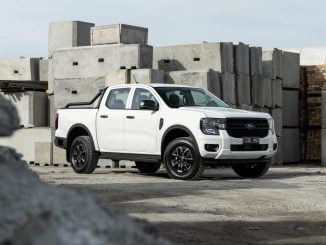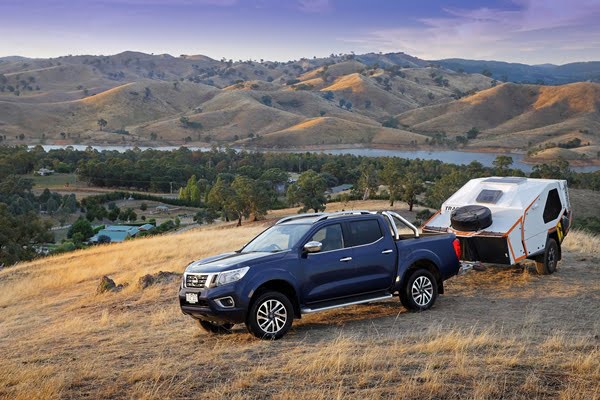Preparing Your 4WD – Gday adventure seekers! I’m Chris Notte and I’ve been working with vehicles for over 20 years at our family-owned mechanic shop in Midvale, servicing four-wheel drives in Perth’s eastern suburbs.
With three generations in the industry behind me I’ve gained hands on experience maintaining 4WDs for daily driving and off-road trips. Today I’m sharing practical tips on preparing your 4WD for off road adventures, from my years of experience. The goal is to help you stay safe and enjoy Australia’s diverse landscapes, from WA’s beaches to outback tracks.
Off road driving in a 4WD is exciting but not without risk. Western Australians love their four-wheel drives and fuel the enthusiasm for off road adventures. In Australia run off road crashes account for a significant portion of incidents and over 30% of fatalities, often on gravel roads or corrugations in remote areas.
In WA alone road fatalities have reached 112 in the first half of 2025, the highest in nearly 18 years, how quickly things can go wrong without proper prep. Breakdowns are often tyre failures, suspension wear or getting bogged in sand and turning fun trips into costly dramas.
Before buying accessories seek advice from trusted sources for safe and reliable options. By focusing on the key checks and techniques you can minimize the risks and enjoy the adventure.
Know Your 4WD and the Terrain
Know your vehicle inside out. Whether it’s a tough truck like the Isuzu D-MAX or a versatile jeep, modern 4WDs have traction control, diff locks and low range gearing. They have high riding positions for better visibility and safety but success off road is all about adapting to Australia’s terrain, from soft sand dunes to steep rocky slopes and water crossings. Plan ahead.
For WA coastal tracks, drop tyre pressure to 16-18 psi for better floatation and traction. Letting air out of your tyres improves grip and reduces the chance of getting bogged. Use your judgment to assess the terrain and plan safely.
On gravel or corrugated outback roads slow to 40-60 km/h to maintain control. High speeds amplify vibrations and stress suspension and shocks. Scout ahead: Walk tricky sections if safe, check for holes or debris. In northern WA watch for saltwater crocodiles near creeks. This habit prevents surprises and keeps families safe.
Pre Trip Checks – Preparing Your 4WD
Prevention is better than cure. Start with tyres, the foundation of traction. Check for wear, alignment and carry a deflator and 12 volt compressor. Punctures from rocks or over-inflation in sand are common. Rotate regularly and consider all terrain tyres for grip.
Check brakes and suspension next. Off road wear from corrugations or impacts causes worn shocks or imbalances. Test brakes. Spongy feel needs investigation. Upgrades like Bilstein or Fox shocks help but inspections extend stock systems. Align wheels every 10,000 km to prevent uneven wear.
Don’t forget fluids and electrics. Check oil, coolant and brake fluid. Heat causes leaks. Battery failures or water damaged wiring are common. Listen for 4WD noises. Inspect hitches if towing a camper like the Patriot X1-H. Look for excessive wear, leaks or issues that signal problems.
Navigation and Communication for Off Road Safety
Navigation and communication are crucial. Use a GPS or mapping app, fully charged with backup power. Carry a physical map and compass for remote areas where tech fails.
A UHF radio is essential for group contact and alerts. Fit a quality antenna for range. If towing, check brakes regularly as weight affects stopping on steep ground. Keep your hands on the wheel, maintain distance on narrow tracks and adjust speed for conditions.
Gear and Recovery for Self-Reliance
Pack smart for hiccups. A shovel and recovery boards help dig out in sand or mud. Carry rated recovery points and kinetic straps for winching. Proper points ensure safe towing. Avoid wheel spin to prevent deeper bogging. Follow the steps for successful recovery. For water crossings, assess carefully, measure depth and maintain momentum in low gear.
Don’t exceed wading limits to prevent flooding. Dry brakes afterwards and check for damage. Carry a first aid kit, fire extinguisher and beacon. Self-reliance is key in regional WA where serious crashes are disproportionate to population. Travel in convoys and practice recoveries.
Off Road Driving Techniques
Technique is everything. Sand momentum with gentle acceleration. Ease off crests. On climbs use high gears for power. Descend with engine braking. For steep slopes engage hill descent control if available. Slow down on slippery gravel. Steer into slides.
On rocky trails control to avoid traction loss. Switch to manual mode before challenges to protect transmission. Limit night driving to 60 km/h for obstacles. Use mirrors for backing and keep your hands on the wheel. Get the family involved: Get the kids to check tyres or packing. It’s fun and awareness building.
Pre Trip Checks and Planning
Before you leave check ground clearance and tyre suitability. Swap for sand specific if needed. Fit rock sliders or skid plates for rocky protection. Check brakes, suspension, steering, fluids and leaks.
Plan your route with apps, check closures and challenges. Pack water, food, fuel and emergencies like a spare tyre and jumper cables. Check the weather. Conditions can change fast. In groups share your route and communication. Drive slow on slippery or steep surfaces.
In summary preparing your 4WD off road isn’t just about the vehicle. It’s about respecting the terrain and prioritising safety for epic family memories. If you’re in Perth and want expert eyes on your setup, consider consulting a dedicated 4WD mechanic who knows the local conditions. Happy trailing!
Article By Chris Notte, Owner and Lead Mechanic at Autoplus WA





